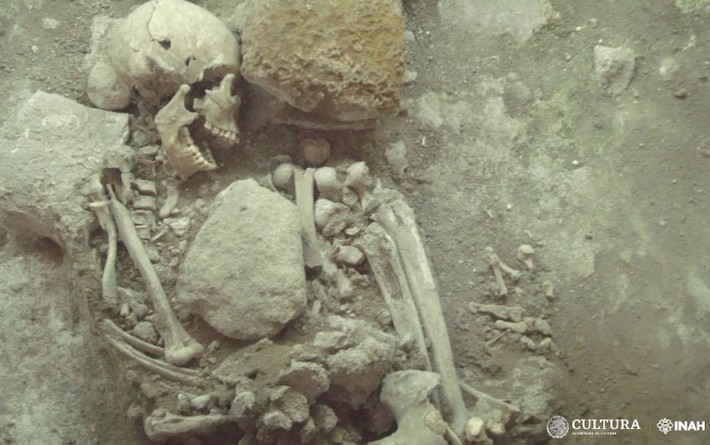 CUERNAVACA, MEXICO—Live Science reports that a skeleton discovered in 1971 at the entrance to the palace of the Spanish conquistador Hernán Cortés in south-central Mexico has been reexamined by Pablo Neptalí Monterroso Rivas and Isabel Bertha Garza Gómez of Mexico’s National Institute of History and Anthropology (INAH). The Tlahuica, an Aztec people, occupied this area of Mexico as early as A.D. 1150, and built a city named Cuauhnáhuac. Cortés destroyed the city in 1521 and built his palace in 1535 on the ruins of the Aztec tax collection house. When these bones were first analyzed, the researchers concluded that they likely belonged to the Spanish monk Juan Leyva, since historic records showed that he had been buried near a gate at the palace. The new study suggests that the shape of the skull and pelvis indicate that the remains actually belonged to a woman between the ages of 30 and 40 at the time of her death. The crouched position of the burial, and some flattening at the back of the skull, perhaps from the practice of cranial modification, indicate that she may have been Tlahuica. Monterroso Rivas and Gómez think the woman was buried between 1500 and 1521, perhaps as part of a ritual event. They also identified the bones of an infant and a child among the remains. Additional testing of the bones may reveal if the individuals were related. To read about excavations of the Aztec capital, go to "Under Mexico City."
CUERNAVACA, MEXICO—Live Science reports that a skeleton discovered in 1971 at the entrance to the palace of the Spanish conquistador Hernán Cortés in south-central Mexico has been reexamined by Pablo Neptalí Monterroso Rivas and Isabel Bertha Garza Gómez of Mexico’s National Institute of History and Anthropology (INAH). The Tlahuica, an Aztec people, occupied this area of Mexico as early as A.D. 1150, and built a city named Cuauhnáhuac. Cortés destroyed the city in 1521 and built his palace in 1535 on the ruins of the Aztec tax collection house. When these bones were first analyzed, the researchers concluded that they likely belonged to the Spanish monk Juan Leyva, since historic records showed that he had been buried near a gate at the palace. The new study suggests that the shape of the skull and pelvis indicate that the remains actually belonged to a woman between the ages of 30 and 40 at the time of her death. The crouched position of the burial, and some flattening at the back of the skull, perhaps from the practice of cranial modification, indicate that she may have been Tlahuica. Monterroso Rivas and Gómez think the woman was buried between 1500 and 1521, perhaps as part of a ritual event. They also identified the bones of an infant and a child among the remains. Additional testing of the bones may reveal if the individuals were related. To read about excavations of the Aztec capital, go to "Under Mexico City."
Remains from Mexico’s Palace of Cortés Reevaluated
